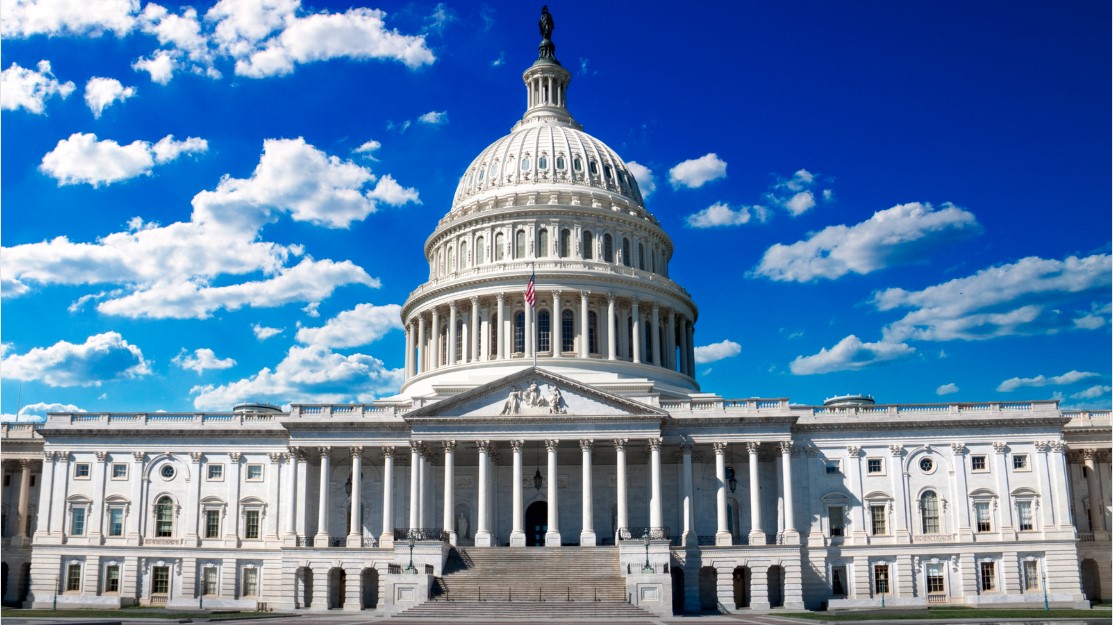On July 4, 2025, President Donald J. Trump signed the One Big Beautiful Bill Act (OBBBA) into law. The legislation makes sweeping changes across nearly every industry and agency in the United States. Notably, the bill makes changes to tax provisions across business and restructures health care across states. Changes to the Supplemental Nutrition Assistance Program (SNAP), Medicaid, and Medicare would have impacts on older adults. What are the implications of these alterations to major programs such as SNAP, Medicaid, and Medicare?
A proposed $300 billion reduction in the Supplemental Nutrition Assistance Program (SNAP) by 2034 will significantly affect older adults and caregivers.
Federal SNAP changes shift costs to states, ends some exemptions, and adds new eligibility requirements
A proposed $300 billion reduction in the Supplemental Nutrition Assistance Program (SNAP) by 2034 will significantly affect older adults and caregivers. The Center on Budget and Policy Priorities indicates that nearly one million individuals aged 55–64 may face benefit reductions. In the earlier SNAP guidelines, adults without dependents aged 18–49 had to participate in work, training, or volunteer activities for a minimum of 80 hours per month to avoid losing benefits after three months within a three-year cycle—unless exempted.
Work requirements increase to age 64
The passage of the One Big Beautiful Bill pushes those requirements further, expanding them to adults up to age 64. Many older adults could find it difficult to fulfill these requirements due to factors such as health issues, intermittent work schedules, and age discrimination.
AARP reports that nearly 64 percent of workers over age 50 have encountered age discrimination firsthand or observed it in the workplace, with one in five feeling pressured to leave their jobs because of it. "It's so much harder at that age to find a job, based on age discrimination, outdated skills and you may have health issues that don't rise up to a full disability," Salaam Bhatti, director of the SNAP program at the Food Research & Action Center, an anti-hunger advocacy group, told CBS MoneyWatch.
Additionally, the policy removes exemptions for caregivers of children aged 7–18, which could negatively affect Ohio’s 86,000 grandparents raising grandchildren. This can limit their ability to meet strict work or volunteer requirements, placing them at risk of losing essential food assistance. Without recognizing these realities, the policy risks unintentionally disqualifying seniors who genuinely need help.
Changes to cost sharing will end 50 years of successful precedent
Historically, SNAP benefits have been federally funded, with states covering 50% of administrative expenses. The OBBBA proposes significant cost-shifting to states, increasing their share of administrative costs to 75 percent and imposing liability for up to 25 percent of benefit errors, meaning states will be on the hook for a part of the benefits for the first time in the program’s history.
If Ohio had an error rate of 6 percent or lower, the state would owe an added $158 million annually.
According to the Center on Budget and Policy Priorities, if Ohio had an error rate of 6 percent or lower, the state would owe an added $158 million annually. If the error rate rose to 25 percent or more, the cost could climb to $790 million a year. This calculation excludes added administrative expenses that the bill mandates.
These changes could place a significant financial strain on states, requiring them to find new ways to absorb rising administrative and error-related expenses. “Even shifting funding by 5 percent to the states could force the rationing or reduction of benefits. States might also be forced to change eligibility requirements, making it harder for individuals to qualify for the benefits,” says Lauren Ryan, AARP government affairs director for federal food security policy.
Work rules could create strain administrative capacity
Changes to SNAP’s work rules could risk vital food assistance for older adults and caregivers—either by directly cutting eligibility or indirectly straining the system. Ohio would have to adjust to the new revisions in addition to social service agencies already operating with limited staff and heavy workloads. These agencies and workers may experience significant challenges handling the surge in applications (new enrollees 55-64), tracking work requirement compliance, managing increased administrative costs, and taking on greater financial liability for errors while trying to maintain effective case management.
Joree Novotny, executive director of the Ohio Association of Foodbanks, noted that Ohio’s current benefits system is so underfunded that SNAP recipients often face two-to-three-hour waits just to apply, recertify, or report income changes. She warned that increasing the administrative burden by 50% would only worsen delays and increase the risk of mistakes by already overextended staff. Many older Ohioans already face challenges when trying to access SNAP benefits due to complex paperwork and cumbersome application processes which impacts participation rates. Adding expanded work requirements could intensify these barriers and further reduce participation among older adults.
Adding expanded work requirements could intensify these barriers and further reduce participation among older adults.
Research shows that SNAP work requirements have limited success in improving long-term employment outcomes. Multiple studies (e.g., Ku, Brantley & Pillai (2019, Am J Public Health), Urban Institute’s SNAP Work Requirements in Arkansas for Adults without Dependents or Disabilities, National Bureau of Economic Research) find that SNAP work requirements often cause recipients to lose benefits once work requirements were imposed. While some participants may see short-term job gains, most do not experience sustained income growth or financial stability due to a variety of factors and systematic barriers. Vulnerable groups such as older adults, people with disabilities not receiving SSI, and unpaid caregivers are especially at risk of losing vital food assistance.
Older adults must work to maintain Medicaid and pay more due to retroactive payments
Major changes to Medicaid due to the OBBBA will affect the older adult population in many ways. According to AARP, Medicaid recipients (ages 19-64) who are applying for coverage or who are obtaining coverage through the Affordable Care Act (ACA) Medicaid expansion must work at least 80 hours per month. They can also take part in job training or community service to fulfill the 80-hour requirement.
Changes in eligibility redeterminations and retroactive payments could result in medical debt or coverage loss
The new work requirement could affect about 9.2 Medicaid enrollees, ages 50 to 64. Additionally, states must conduct eligibility redeterminations every six months for adults who are enrolled in the ACA Medicaid expansion program starting on December 31, 2026. This is an increase in redeterminations from once a year. The increase in paperwork requirements could cause more people to lose coverage.
Changes to retroactive payments will also affect older adults. Originally, retroactive coverage occurs when Medicaid covers medical bills for up to three months prior to individuals submitting their Medicaid applications. The legislation language now restricts retroactive coverage from three months to two months in non-Medicaid expansion states, and to only one month for Medicaid expansion states. This change could increase uncompensated care costs in hospitals, clinics, and emergency rooms, which will force vulnerable populations—like older adults— to suffer medical debt.
Long-term care services and nursing facilities accepting Medicaid may cease or close
Medicaid changes from the OBBBA will affect both nursing facilities and home- and community-based services (HCBS). Medicaid cuts could mean closure of skilled nursing facilities. The possible closures could disproportionately affect nursing homes that heavily rely on Medicaid [TB2] [NT3] [KT4] [NT5] reimbursement. In the OBBBA, states will be able to submit 1915(c) waivers to gain financial support for HCBS within Medicaid. This opportunity would allow states to expand HCBS coverage starting on July 1, 2028. If the waiver is approved by the Secretary of U.S. Department of Health and Human Services, then the term for these services could last for three years and be extended to five years if states requested it.
According to Families USA, this provision could increase federal spending by $6.6 billion over the next 10 years from 2025 to 2034. Likewise, the waivers will help states meet the needs of individuals who would like to receive long-term care services and support in their homes or communities instead of institutional settings.
Significant Medicare changes will affect providers, immigrant populations, and individuals who are disabled
With the OBBBA signed into law, Medicare will undergo significant changes that will impact providers, immigrant populations, and individuals who are disabled. The Kaiser Family Foundation (KFF) published an article detailing changes in the health provisions in the OBBBA.
Broadly, Medicare provides health care for 68.6 million beneficiaries across the United States, with 90 percent of enrollees in Medicare being 65 and over. In 2024, 50.4 percent of Medicare recipients were enrolled in Medicare Advantage, and 49.6 percent of recipients were enrolled in Traditional Medicare. That same year, 56 percent of recipients in Ohio were enrolled in Medicare Advantage, and 44 percent of recipients were enrolled in Traditional (Original) Medicare. [TB6]
Pay-As-You-Go to be revived, reducing federal Medicare spending
A report from the Congressional Budget Office (CBO) reported that the effects of the reconciliation bill would trigger the Pay-As-You-Go Act of 2010 (S-PAYGO) reducing spending in Medicare. S-PAYGO is a policy that works to offset costs that could affect the national debt substantially. This is accomplished by balancing costs through increasing revenues or decreasing spending on other programs.
Under S-PAYGO, spending in Medicare is reduced to 4 percent, calculated to be an estimated $45 billion for FY 2026. That same year, the limit would also sequester $185 billion in the remaining direct spending account.
A sequestration order made by the Office of Management and Budget (OMB) of $230 billion for each fiscal year through 2034 would increase the overall reductions in Medicare spending to approximately $75 billion by 2034 and would overall total $490 billion from 2027-2034. These changes would significantly cut Medicare spending, reducing its efficacy as a program to sufficiently provide services to recipients needing it most.
Undocumented immigrants can no longer access Medicare
The OBBBA removed eligibility for undocumented immigrants, only allowing qualified individuals who are Lawful Permanent Residents, individuals living through a Compact of Free Association, or immigrants from Cuba/Haiti meeting specific qualifications. Individuals with sufficient work history can qualify for Medicare Part A with premium-free coverage.
Update to fee schedule conversion will increase Medicare payments to physicians
Payments made to physicians through Medicare are calculated through a conversion factor that is updated every year. The Medicare conversion factor (CF) is the formula used to calculate the payment of physicians within the Medicare Physician Fee Schedule. The other two elements used to calculate physician payment are the Geographic Practice Cost Index, and the Resource Based Relative Value Scale.
With the OBBBA in effect, there will be an increase in payment under the physician fee schedule (PFS) to 2.5 percent for 2026. Medicare utilizes the PFS when compensating services provided under Medicare Part B, which accounts for 7,400 services. This would result in increased reimbursements for physicians in 2026.
Medicare Drug Negotiation Program expansion
The OBBBA broadens Orphan Drug Exclusion and eligibility within the Negotiation Program for prescription drugs that attend to health needs. Under the original Inflation Reduction Act signed in 2022, the Secretary of Health and Human Services worked to negotiate costs with drug companies for pharmaceuticals covered under Medicare Part D and Part B.
Price negotiation drugs were selected based on how long they’ve been on the market (seven years for small molecule drugs or 11 years for biologics) and if they are high expense drugs without similar competition. Orphan drugs that treat rare disease were excluded from this selection.
Orphan Drug Exclusion was shifted to include pharmaceuticals that treat multiple or individual rare diseases.
Under the OBBBA, Orphan Drug Exclusion was shifted to include pharmaceuticals that treat multiple or individual rare diseases. The period that these drugs are on the market will not count toward the seven- or 11-year period that forms selection for eligibility.
Barriers to enrollment in Medicaid Savings Programs, especially for disabled people with lower incomes
The OBBBA changes the implementation date of a rule created by CMS in September 2023 to decrease barriers to enrollment in Medicare Savings Programs. The changes would make it easier for low-income individuals to enroll in Medicare to receive services. States were mandated to begin implementing the rule on October 1, 2024, but the OBBBA pushed it back to October 1, 2034. This change will disproportionately affect disabled people, who tend to have lower incomes.
Community Solutions will continue to provide updates to changes impacting health and human services. Be sure to subscribe to 5Things to get notified of updates that are pertinent to Ohioans.







.png)
.png)


